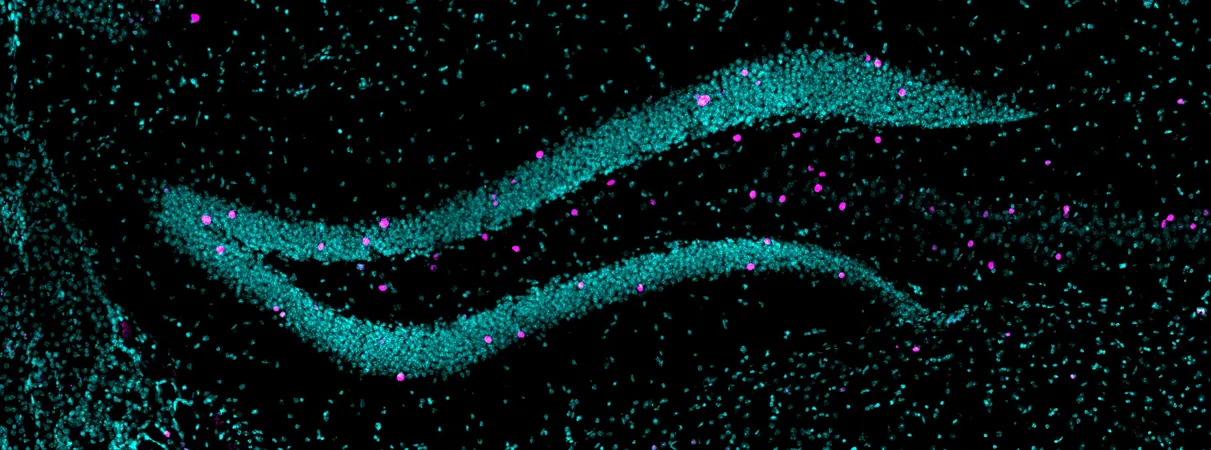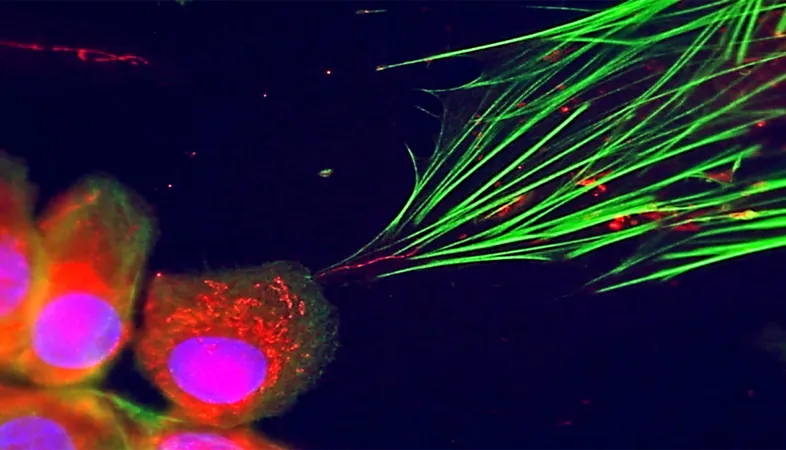
**Unraveling the Origins of Anxiety: How Pregnancy Inflammation Affects Offspring**
2025-09-10
Author: Wei Ling
**Could Your Anxieties Be Rooted in the Womb?**
A groundbreaking preclinical study from Weill Cornell Medicine reveals that the seeds of anxiety may be sown long before birth. By investigating how infections and stress during pregnancy influence a child's mental health, researchers have discovered a crucial link between maternal adversity and anxiety risks in offspring.
**Inside the Brain: The Key Role of the Ventral Dentate Gyrus**
This insightful study, published in *Cell Reports*, zeroes in on the ventral dentate gyrus (vDG), a brain region critical for assessing threats. Researchers found that traumatic prenatal experiences rewire certain neurons in this area, rendering them overly reactive to future stressors and creating a heightened anxiety vulnerability.
Dr. Miklos Toth, a co-leader of the research and esteemed professor at Weill Cornell, states, "Our findings highlight that prenatal stress leaves indelible marks on the brain, linking gestational environment to anxiety-like behaviors. This might explain the ongoing sensitivity and avoidance behaviors seen in those predisposed to anxiety."
**The Experimental Approach: Mice as Models**
Using a mouse model that simulates abnormal immune responses during pregnancy, scientists observed that these animals exhibited telling signs of anxiety—like a fear of open spaces and heightened stress reactions.
**The Epigenetic Signature: A New Pathway to Understanding Anxiety**
To uncover the root of these behavioral changes, researchers analyzed the DNA within the neurons of the vDG. They discovered alterations in DNA methylation—chemical modifications that dictate gene expression without changing the genetic data itself. This epigenetic shift appears to profoundly influence how the neurons communicate.
The researchers pinpointed thousands of locations where DNA methylation was significantly altered, especially in regions that control the synapses—the connections that enable neurons to talk to each other.
**A Dangerous Perception: How Neurons Overreact**
Upon exposure to threatening conditions, the neurons most affected by this prenatal adversity showed hyperactive responses. As Dr. Kristen Pleil, another co-leader of the study, explains, these neurons begin to function differently as adults, interpreting ordinary environments as more threatening than they are.
**Behavioral Monitoring: A Telling Transformation**
When researchers monitored the mice navigating a maze, an intriguing pattern emerged. Control mice maintained stable neuronal activity moving from safe to risky areas, while those with prenatal exposure to stress exhibited a spike in neuronal activity at the mere thought of transitioning to a dangerous space.
Dr. Pleil remarks, "This heightened vigilance manifests as a preemptive response to potential danger, underscoring an exaggerated sense of threat that drives anxiety-related behaviors."
**Looking Ahead: What’s Next for Research?**
This research marks a significant step in connecting prenatal environments to psychiatric risks through epigenetic changes. Dr. Toth expressed the intent to delve deeper into why only a select few neurons are influenced during pregnancy, which could illuminate potential early biomarker discoveries in humans.
Understanding these mechanisms might be the key to identifying similar epigenetic markers in people, possibly opening doors to targeted therapies that could mitigate the risks of anxiety stemming from prenatal conditions.




 Brasil (PT)
Brasil (PT)
 Canada (EN)
Canada (EN)
 Chile (ES)
Chile (ES)
 Česko (CS)
Česko (CS)
 대한민국 (KO)
대한민국 (KO)
 España (ES)
España (ES)
 France (FR)
France (FR)
 Hong Kong (EN)
Hong Kong (EN)
 Italia (IT)
Italia (IT)
 日本 (JA)
日本 (JA)
 Magyarország (HU)
Magyarország (HU)
 Norge (NO)
Norge (NO)
 Polska (PL)
Polska (PL)
 Schweiz (DE)
Schweiz (DE)
 Singapore (EN)
Singapore (EN)
 Sverige (SV)
Sverige (SV)
 Suomi (FI)
Suomi (FI)
 Türkiye (TR)
Türkiye (TR)
 الإمارات العربية المتحدة (AR)
الإمارات العربية المتحدة (AR)